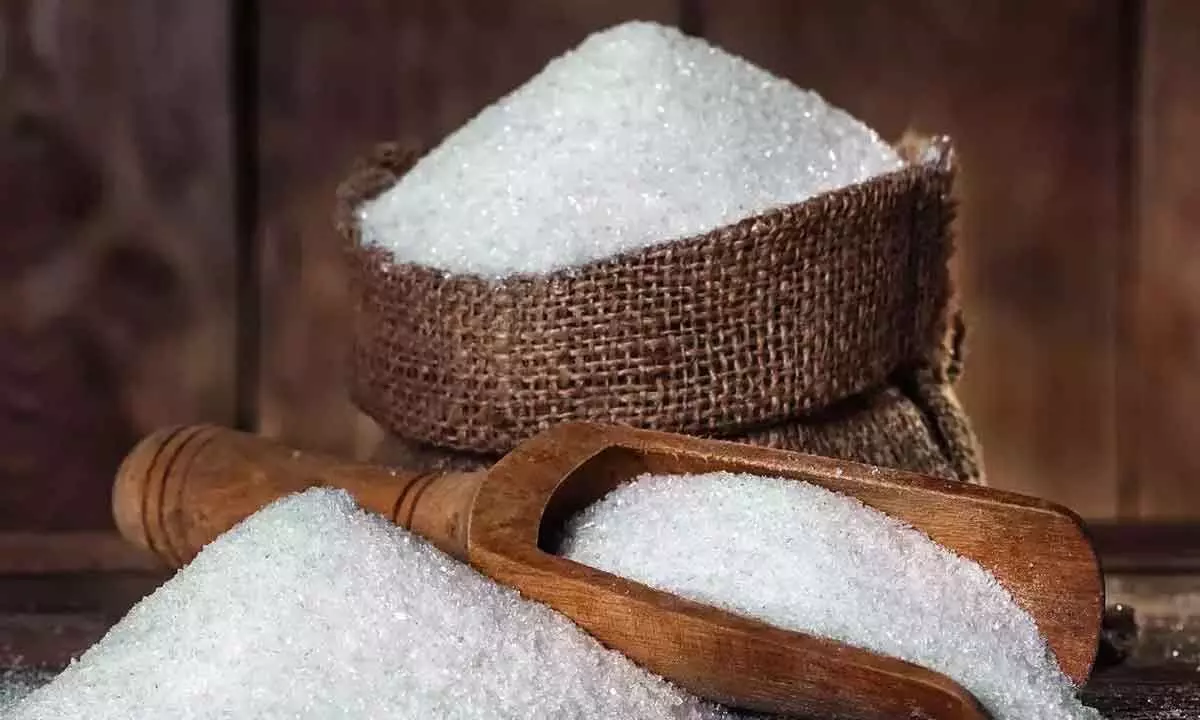Curbs on sugar export raise fears of serious supply shortage
image for illustrative purpose

The Centre on December 7 imposed a ban on the use of ‘sugarcane juice and sugar syrup’ for ethanol production in the 2023-24 supply year that started this month, in order to ensure adequate sugar availability for domestic consumption and also to keep prices under check. However, the government has allowed use of ‘B-molasses’ for ethanol production in 2023-24, a move which sugar industry bodies welcomed. Experts, on their part, feel that restrictions on the use of sugar juice for ethanol production stems primarily from concerns about sugar crops in Maharashtra and Karnataka, which experienced uneven rains. Since sugar price can be a sensitive issue during election time, it would be unrealistic to expect any relaxation till elections are over. This is certainly a negative trend from the perspective of sugar companies, which have invested heavily in producing ethanol. Sugar stocks, particularly the ethanol-oriented ones, are likely to remain under pressure for some time, feels Geojit Financial Services. Quite on the contrary, the National Federation of Cooperative Sugar Factories (NFCSF) said that there is a huge stock of ethanol made from B-molasses lying apart from contracted quantities.
The new directive from the Centre has resolved the industry’s concern. However, there is ambiguity in the government’s instruction that states supply of ethanol from “existing offers” received by OMCs from B-Heavy molasses will continue. Will it be withdrawn after the existing tender is over? There is no clarity so far. All India Sugar Trade Association (AISTA) has said that B-molasses production shall continue against the existing offer but it is not clear if it will continue for next B-molasses tender. The ministry’s decision comes amid the estimated fall in sugar production in 2023-24 marketing year. In the 2022-23 ESY (December-October), industry officials said that, until a few months ago, of the 4.94 billion litres of ethanol produced in the country, a quarter, estimated to be around 1.26 billion litres, came from sugarcane juice or syrup as feed-stock, while 2.33 billion litres (around 47 per cent) came from B-heavy molasses, and the rest, around 1.3 billion litres, came from grain-based sources.
In the 2023-24 ESY, over two million tonnes of sugar could be ploughed back into the total supplies after sugar companies were barred from producing ethanol from cane juice and syrup. The 2023-24 sugar season started in October, while that of ethanol supply year (ESY) began last month November. One has to keep in mind that Indian Sugar Mills Association (ISMA) has projected a nine per cent fall in gross sugar production at 337 lakh tonnes for the 2023-24 marketing year starting (October-September). However it has not estimated the diversion of sugar for ethanol production. India exported 61 lakh tonnes of sugar during the 2022-23 marketing year, as against a record 112 lakh tonnes in the previous year. The government has not yet allowed exports for this marketing year. There is no doubt that Indian policymakers need to understand that the mere announcement of export curbs signals that there is a serious supply shortage. That, in turn, encourages hoarding and speculation by traders and bulk buyers as well as households which overstock fearing further increases in prices. That makes export curbs ineffective when it comes to controlling prices.

